| Toyota Supra Exhaust Drone Removal | ||||||||
|---|---|---|---|---|---|---|---|---|
Exhaust drone is a PITAI had a mandrel bent 3.0" exhaust system with a single rear straight through muffler which was a bit too loud and I also wanted a better flowing exhaust system (for more hp) and I wanted to get it quieter as well. Yes, you can do both at once if you design the system correctly. To do this, the exhaust system was replaced with a mandrel bent straight through 3.5" exhaust system with a big center straight though 3.5" muffler and a large straight through 3.5" rear muffler with a modest 4.0" tip. This exhaust system (which includes a 3.5" downpipe) currently supports 602rwhp and should handle up to 700rwhp with no problems. The exhaust system ended up being fairly quiet at most rpm, but it had some very loud droning around idle (800 to 1000rpm), and at 1400rpm and at 2800rpm and probably at 5600rpm as well, but I never confirmed that. Droning is not just a loud exhaust noise as it is usually at a single frequency (and multiples of that frequency) and it is EXTREMELY annoying as anyone who has had this in their car will tell you. This needed to be fixed as one of my goals was to make it quiet enough so that the Police would not take too much notice of me when I'm driving around, which is pretty often as my car is daily driven. To figure out how to do this, I used Google and searched for "exhaust drone" to see what other people had done to fix it and after quite a bit or reading I settled on fixing the drone by using a "branch resonator". I hadn't even heard of a "branch resonator" before then, so for all you people who were like me, I'll explain what it is. A "branch resonator" is an extra piece of exhaust pipe that is connected into your current exhaust pipe (usually at a right angle to your main exhaust pipe) and then after a set distance, this extra piece of exhaust pipe is capped off at the end. What this means is that no exhaust gas ever flows through the branch resonator (so it has NO efffect on the exhaust flow) but the sound waves from the exhaust drone do travel down the pipe. The sound waves travel down the branch resonator and hit the end of the branch resonator pipe and then bounce back to the main exhaust pipe. If you have calculated the length of the branch resonator correctly, these sound waves will now be 1/2 wavelength out of phase with the sound waves that are causing the droning in the exhaust pipe. These sound waves then combine to cancel out each other which will significantly reduce or even eliminate the droning altogether. 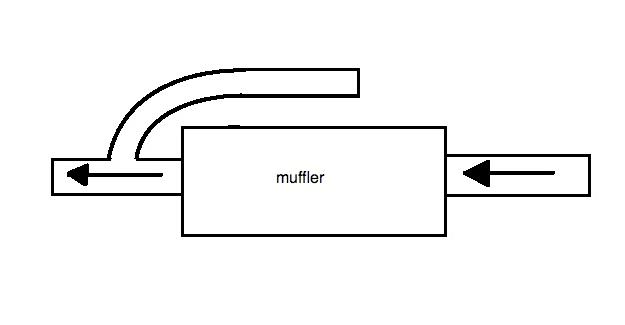
The steps to fix your droning are:Step 1: you need to know the formula to calculate the branch resonator length
Step 2: you need to know the speed of sound at various temperatures
Step 3: you need to guess your branch resonator average temperatureUnfortunately we do not know what the temperature of the exhaust gas in the branch resonator will be until after we have built it. A temperature gun reading from the part of the exhaust pipe you are connecting it to will give you a maximum temperature, but that temperature will drop as you go to the end of the branch resonator. After I built mine I used a temperature gun on the branch resonator and got 30 degC at the end, 50 degC at the middle and around 80 degC at the beginning of the branch resonator. I put my branch resonator in the middle of my exhaust system, just after the center muffler, so futher forward would be hotter and further back would be cooler. I guessed on an average temperature of 80 degC (which I now realize is too hot), but my branch resonator based on that temperature works beautifully at idle, but doesn't cancel all of the droning at 1400rpm and 2800rpm. Step 4: record the sound of the drone at different rpmI used my Blackberry to record the sound at idle, 1400rpm and 2800rpm which was were the droning occurred. I then downloaded the AMR file that the Blackberry records into down to my PC using the USB cable. I then converted it into a PCM file (use Google to find how to do this) so as to have a suitable sound format which I could then do a frequency analysis on. Step 5: analyse the sound to get the frequency of the droneI then used CoolEdit95 to do a frequency analysis of the sounds and the following pictures show this. 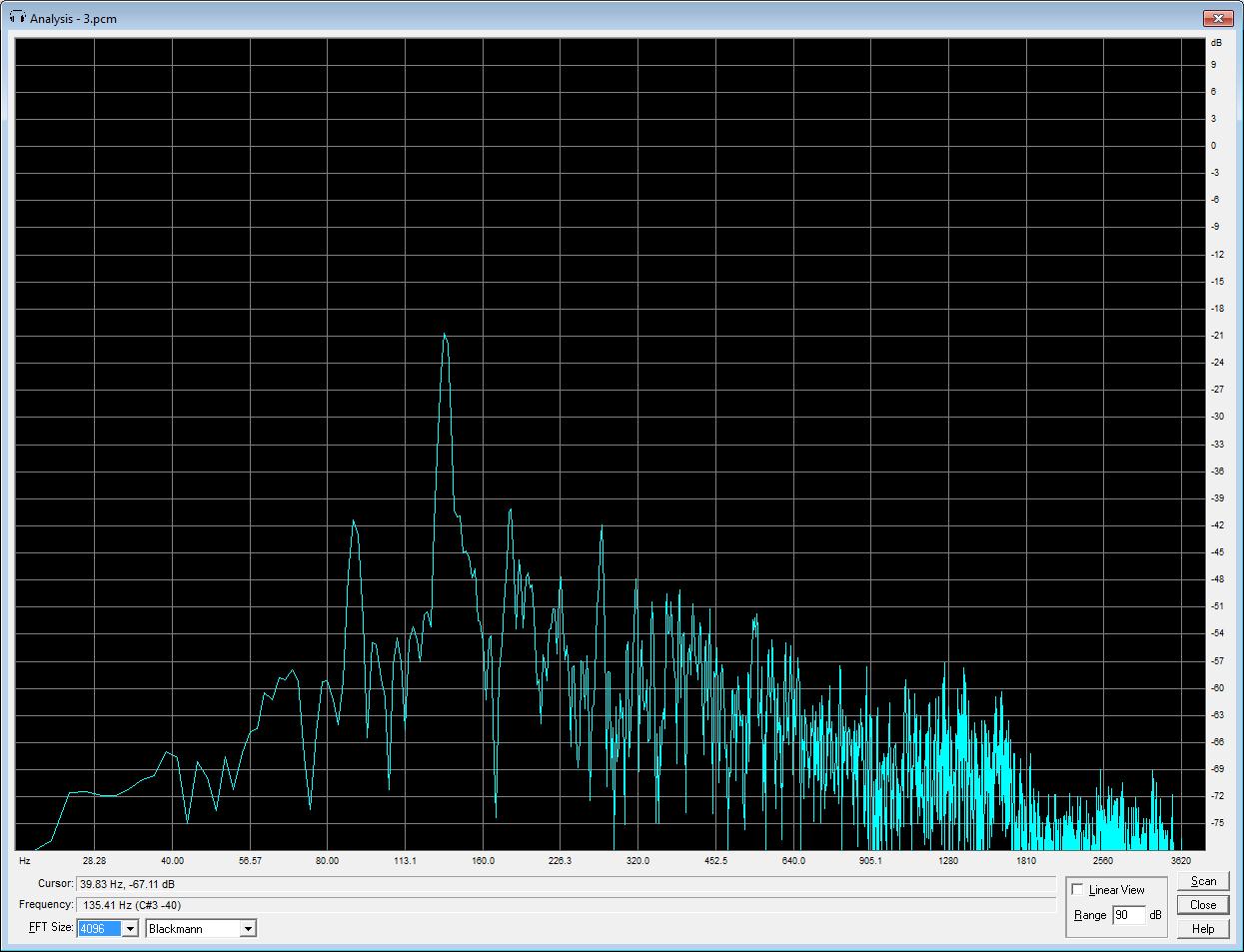 At 1400 rpm (highest db of -11 at 133hz) 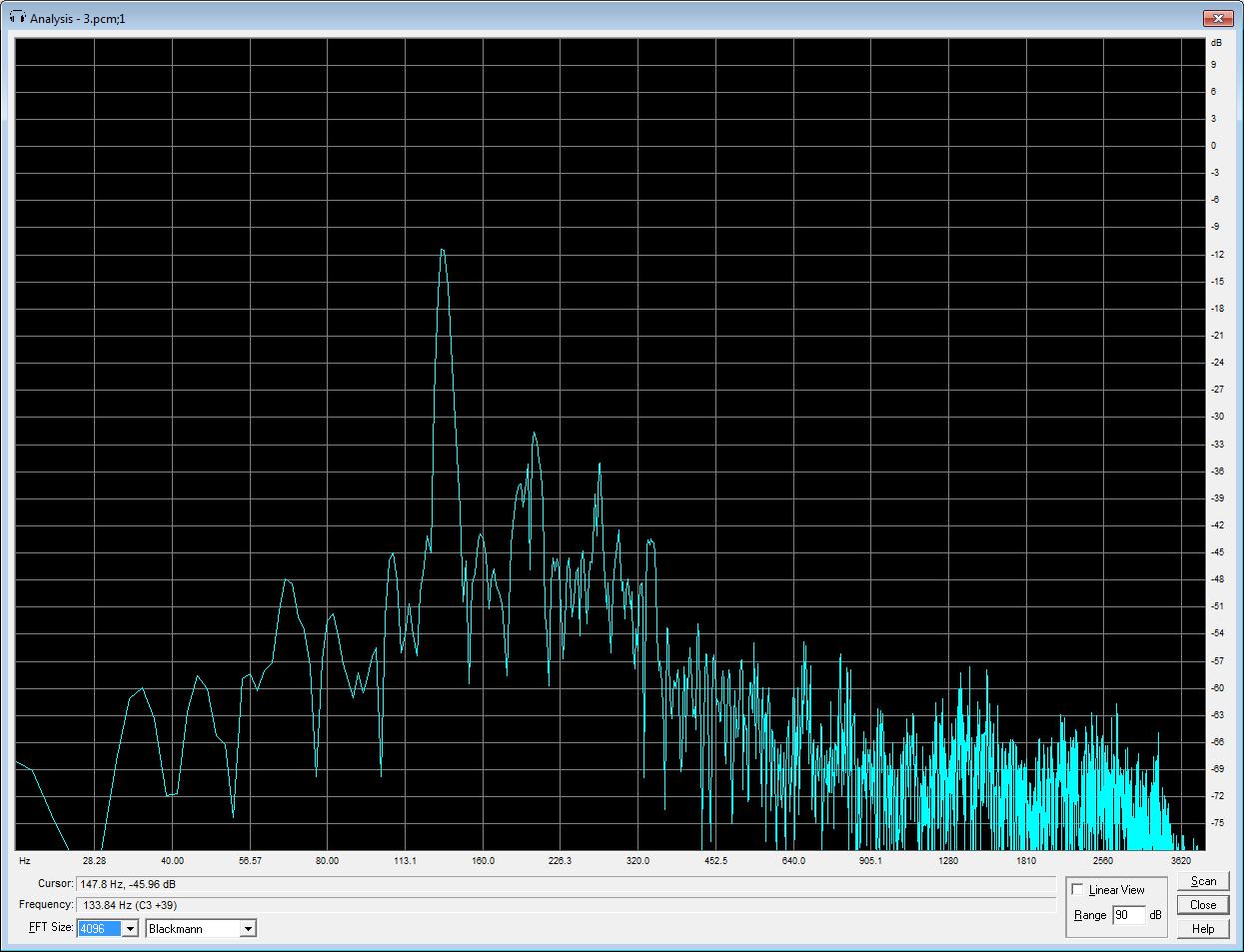 At 2800 rpm (highest db of -7 at 133hz) 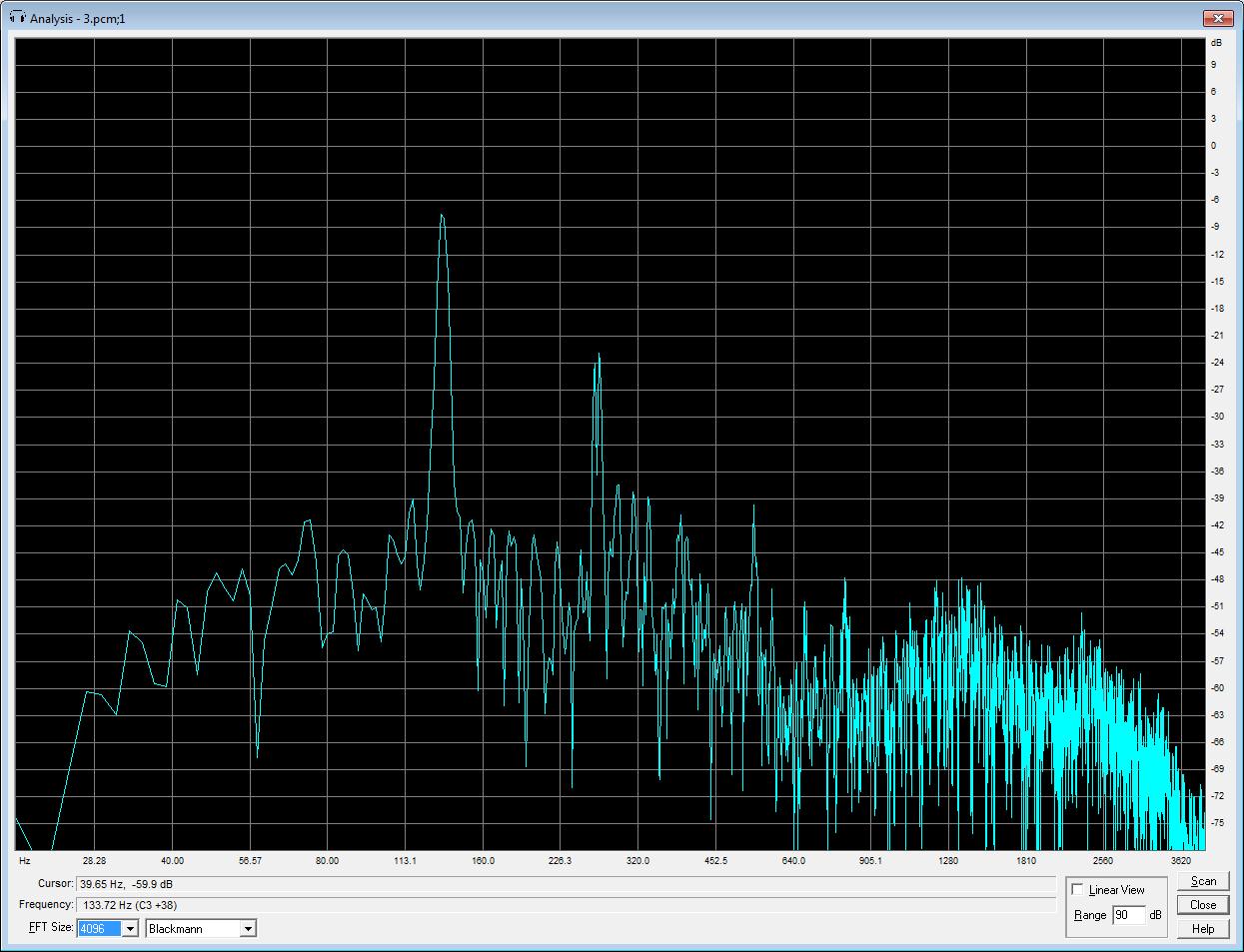 Step 6: calculate the length of the branch resonatorI decided to use a drone frequency of 133hz and an average exhaust gas temperature of 80 degC for my calculations. The calculation was:
376.7 (m/s) / 133 (hz) = 2.832 (m) / 4 = 0.708 (m) which is 708mm So my branch resonator needs to be 708mm in length down the centerline of the exhaust pipe. As it curves away from the main exhaust pipe at the beginning, the length of each side will be a little bit shorter on one side and a bit longer on the other. This will just serve to spread the frequencies it will cancel out a bit more. Step 7: install the branch resonatorYou now need to get your exhaust shop to install the branch resonator. I used Pit Stop on Wairua Rd which did a very good job for me. They used 3.0" exhaust pipe for the branch resonator at my request to help with ground clearance issues. Normally you would use the same size pipe as your main exhaust system. You should now have a much quieter exhaust system with little or no droning left.Step 8: optionally repeat steps 4 and 5 to see what difference it made
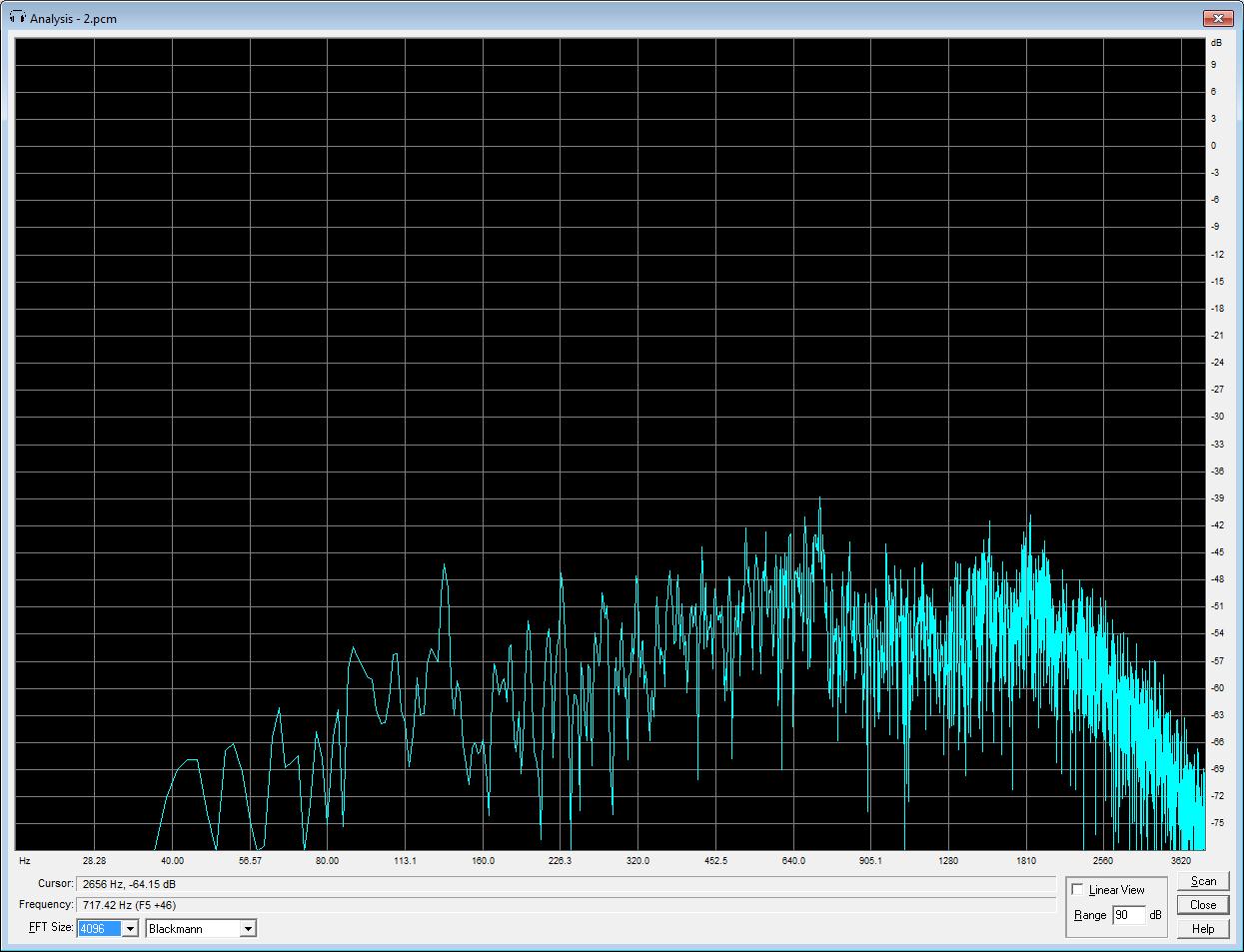 At 2800 rpm, the peak at 133hz has dropped down to -22db, a reduction of -11db 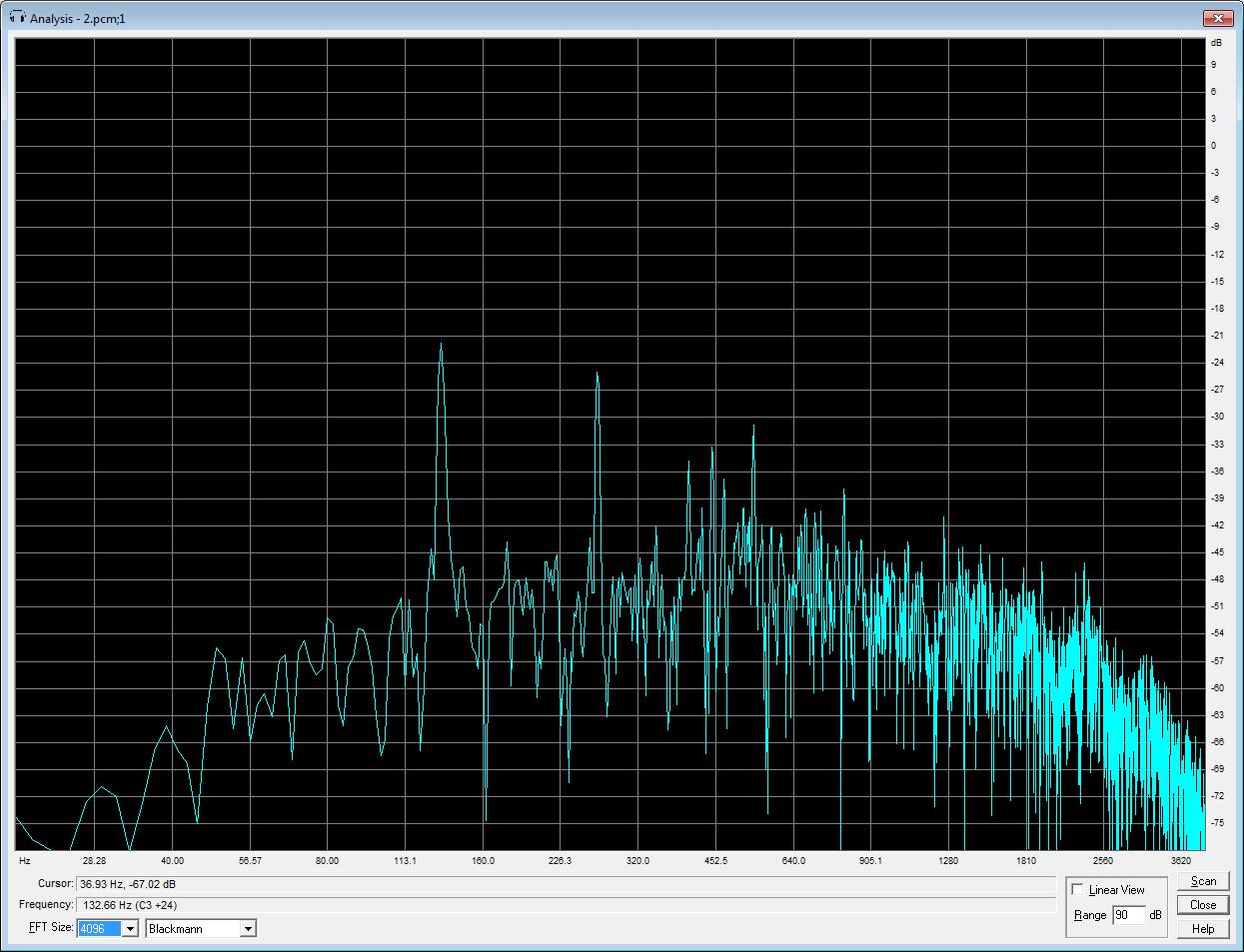 Step 9: go for a long drive and enjoy the much quieter exhaustIf I made the branch resonator length adjustable, with a bit of testing I'm sure I could reduce the 1400rpm and 2800rpm droning noise even more then it does so far. Perhaps I will do this later on, but at the moment I'm very happy with the results as the louder noise at 1400rpm and 2800rpm no longer has the harse exhaust droning noise, but just sounds a bit louder. | ||||||||
Thanks for visiting mkiv.co.nz
Last modified on Thursday, December 16th, 2010